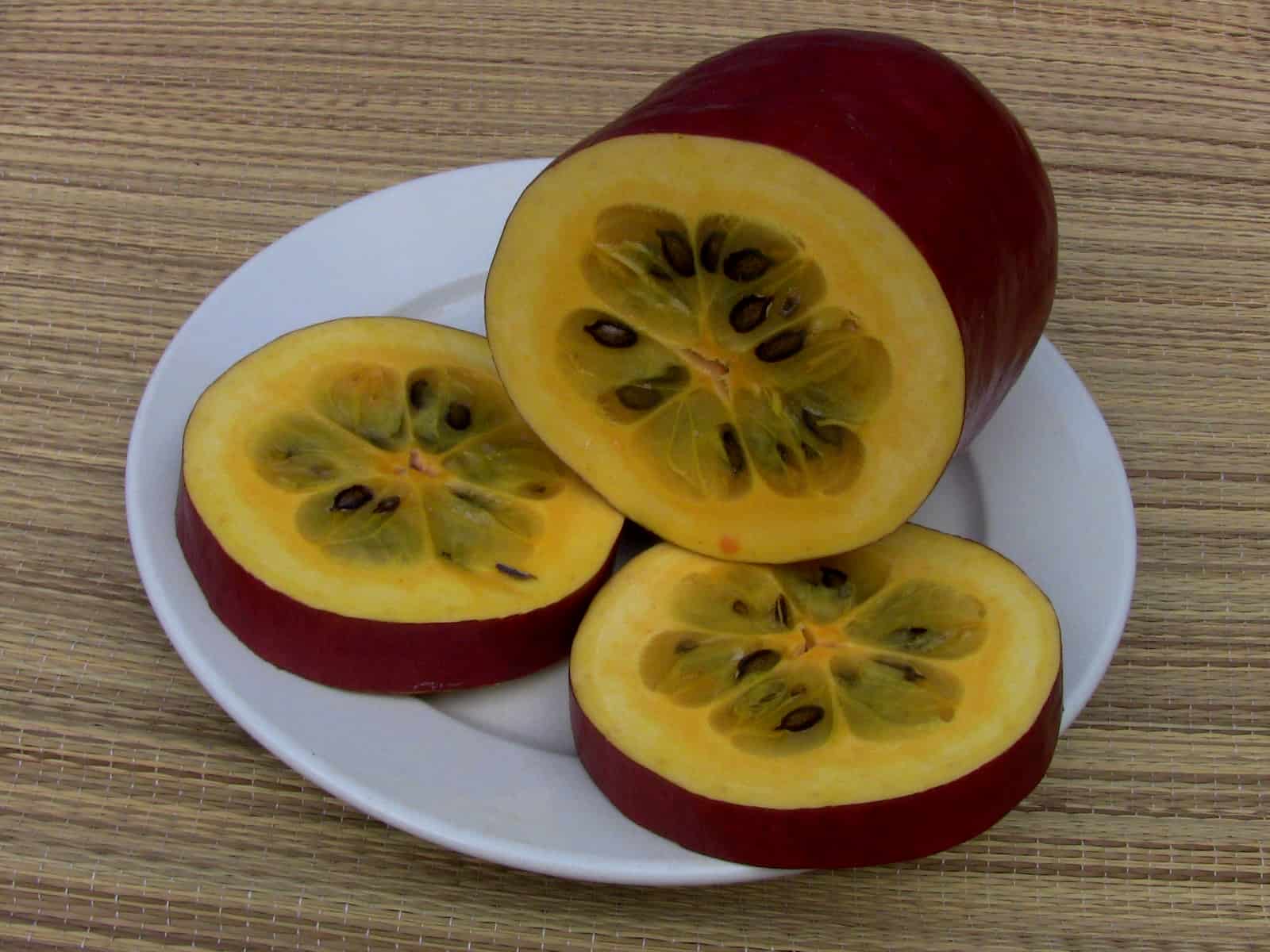Here’s a tropical gardener’s delight that can’t be beat. Cohombro or Cohombo de Olor (Sicana odorifera) is one of the most unusual plants in the tropics. This large (12-14 inches long), maroon-colored, sausage-shaped fruit is a squash with the taste of cantaloupe.
That’s right, cantaloupe! We found this unique fruity squash more than 20 years ago in our local market and have grown it for years. It is easier to grow than organic cantaloupe in the tropics and provides the same flavorful treat.
Cohombro seems to be related to the luffa squash. The leaves and flowers are very similar. Both can be planted, like most squashes, using a composted, fertile circle or “hill” about two feet in diameter for planting one or two seeds. Campesinos plant this squash near a tree or fence, so it can climb while it’s growing.
Cohombros grow vigorously in the first two months, and then begin to flower and set fruit. The young, tender green squash can be selectively chosen for eating, much like zuccinni squash. Later, these fruits begin to fill out and turn a dark maroon color. It’s not unusual for one cohombro squash plant to produce a dozen or more “sausages.” This novelty squash certainly wins the comments from neighbors and friends.
We’ve found it better to let the squashes mature as much as possible on the vine before picking. This ensures they will have maximum sweetness and flavor. Sometimes the squash is slow to ripen, often taking several weeks before it begins to give off a delightful fragrance of cantaloupe throughout the home.
Cohombro is a very hardy plant with few insect problems or plant diseases. Fertilization seems to be the most important aspect of growing good fruit. We always try to apply about one-half of a wheelbarrow with our best, aged compost in each “hill” for planting cohombro seeds.
Applications of limestone and a little bit of ashes also help the cohombro grow vigorously. Foliar spraying the leaves with seaweed extract or compost tea also insures good growth and production.
These hardy, pest-resistant vines can be grown across many bioregions here in Costa Rica with proper soil preparation and fertilization. The novelty of harvesting melon-flavored sausage fruits never gets old! Cohombro has become a beloved staple that delights my family and gardening friends year after year. It’s a true Costa Rican garden gem.

